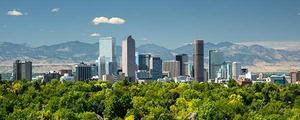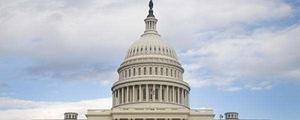Americans' top-of-mind views of 25 U.S. business and industry sectors, collected by Gallup each August, provide interesting insights into the context in which American businesses operate today. The question involved is straightforward, asking Americans if their overall view of each sector is very positive, somewhat positive, neutral, somewhat negative or very negative. My colleagues Megan Brenan and Jeff Jones reported the basic findings last week, noting that Americans on average have become more negative in their views compared with last year. Another colleague, Lydia Saad, looked in particular at the more negative views of the internet and information business sectors, now at record lows.
Here are five additional questions that arise (at least in my mind) from a review of these results. There aren't a lot of empirical data exploring why people hold the views they do, but the findings lead to some interesting hypotheses and insights.
1. Why are Americans so positive about food production and consumption?
Farming and agriculture, the restaurant industry, and the grocery industry are the three most positively rated business and industry sectors out of the 25 Gallup tested.
Food is, of course, one of life's necessities, a physiological need without which nothing much else matters, so the industries involved with the provision of that staple of life may quite naturally be seen in a positive (if not grateful) light. The average American, of course, consumes food every single day, we eat out over four times a week (although this has declined during COVID), and the average American goes to the grocery store 1.6 times a week.
But, as noted below, our need to stay healthy and our daily need for energy are also basic necessities of life -- yet industries associated with those requirements are much more negatively evaluated. Something else is going on.
A writer for Iowa Farm Bureau, contemplating these Gallup results last year, posited that the empty shelves during COVID highlighted the powerfully important role played by farmers in getting food on our table (a role shared by the grocery business, of course). And we know farmers have quite positive images. A survey conducted for the American Farm Bureau Federation showed that 88% of Americans trust farmers,1 and an agricultural industry executive explained that "the iconic farmer represents a commitment to shared values like family, community, hard work and doing 'what's right.'" Indeed, 98% of all U.S. farms are family owned, although the relatively few big family and agricultural farming operations make up over 40% of farm production.
Other factors may be in play. The food industry has not suffered much in the way of scandals in recent years and hasn't been as publicly implicated -- as is the case for other business sectors -- in allegations of contributions to such negative outcomes as climate change (oil and gas) or fostering bitter partisanship (internet, television and radio, publishing). Pricing in the food industry is straightforward without some of the mysteries associated with pricing for prescription drugs, gas and commodities provided by some of the sectors in the list. The burgeoning farm-to-table movement also provides positive imagery for food consumers.
2. Why are Americans so negative about the oil and gas industry, given that almost all of us depend on oil and gas as we go about our daily lives?
Oil and gas are almost as much of a necessity for most Americans as is food. Over 90% of U.S. households have access to at least one vehicle, and there are approximately 290 million vehicles on American roads today. Most of these vehicles depend on petroleum products, with electric cars comprising just about 2% of new car sales. All airplane travel is powered by oil and gas derivatives. Most products we consume come to us by virtue of petroleum-powered airplanes, ships and trucks. Forty percent of all electricity in the U.S. comes from natural gas, more than any other source. The oil and gas industry is responsible for over 10 million U.S. jobs. And it's not just gas at the pump. Half of every barrel of oil is used to make petroleum-based products such as plastics, lubricating oils, asphalts and so forth.
At this juncture in history, Americans need oil and gas to go about their daily business. But the oil and gas industry has the second-worst image of any of the 25 sectors tested by Gallup. As one energy industry observer put it: "The oil industry is currently the engine on which our economies run, yet society does not like or want to acknowledge that fact."
Clearly, one of the major factors is the connection between the oil and gas industry and the environment and climate change. The government has been publicly attempting to reduce the harmful effects of the use of oil and gas since the passage of the Clean Air Act of 1970, initiating decades of signaling from authorities and elites about the negative impact of the use of petroleum products. All of this has permeated into the American consciousness. Gallup research over the years shows that large majorities of Americans want more emphasis on renewable energy rather than on oil and gas. Gallup data also show that 60% of Americans favor efforts to "dramatically reduce the use of fossil fuels such as gas, oil and coal in the U.S. within the next 10 or 20 years, in order to reduce greenhouse gas emissions." Pew Research has found that Americans overwhelmingly say the more important priority for the country should be developing alternative energy rather than expanding the use of fossil fuels.2
Additionally, news about oil and gas spills in the Gulf of Mexico and the impact of fracking on local environments no doubt contributes to the negative image of the oil and gas industry. This industry is run in large part by big energy companies, and Americans in general have low levels of confidence in big business. And Americans are intimately familiar with the ups and downs of the price of gas at the pump, often without understanding the underlying causes, and this opaque pricing structure may contribute to their negative views of the petroleum industry.
3. Why are Americans so negative about the pharmaceutical industry, particularly after the significant success of the industry's development of a COVID vaccine?
Another critically important necessity of life is staying healthy, and pharmaceuticals are a big part of that process. Two-thirds of Americans take prescription drugs. The drug industry came up with the COVID vaccines. Yet, the pharmaceutical industry in the latest Gallup survey is rated third lowest out of the 25 industries tested, with a 31% positive, 51% negative rating.
The pharmaceutical industry is well aware of its image problems as measured by Gallup and other researchers, leading to industry headlines such as "Pharma's Damaged Reputation," "Why Americans Hate Big Pharma More Than Ever" and "Big Pharma Does Have a Reputation Problem but That's Because the Industry Is Misunderstood."
The American Council on Science and Health, reacting to Gallup data showing Americans' negative views of the pharmaceutical industry, highlighted what it considered to be four major causes: very high drug prices, patent protection laws, the origin of the opioid crisis traced to the pharmaceutical industry, and the lack of understanding of the process and expense of discovering a drug that is effective and can be brought to market.
Pricing and the cost of drugs would seem to be the major issue. An interesting narrative analysis carried out by the research firm Protagonist analyzed the content of news stories about the pharmaceutical industry. The results showed that 55% of the "conversation" in these news stories was focused on "profit over patients," described as "a largely negative story where the pharmaceutical companies are a villain focused only on profits and ignore the needs of those who rely on their drugs."
It's probably not only the high prices of prescription drugs that contribute to the industry's image issues, but also the opaque and hard-to-understand ways by which prices are determined, including periodic news stories pointing out how a new drug will cost patients tens of thousands of dollars per year to use.
The Biden administration has itself defined the cost of drugs as a problem, putting forth its "Drug Pricing Plan" designed to "continue the effort to combat excessive pricing of prescription drugs and enhance domestic pharmaceutical supply chains, to reduce the prices paid by the federal government for such drugs, and to address the recurrent problem of price gouging."
The opioid crisis is also certainly a factor in the pharmaceutical industry's negative image, particularly as the public has watched the Purdue Pharma saga unfold over the past few years. Purdue invented OxyContin and relentlessly marketed it as a universal painkiller. As a result of lawsuits alleging that this marketing effort led to a crisis in the drug's abuse, the company declared bankruptcy and was forced to dissolve, and the family that founded the company has agreed to pay $4.5 billion in a settlement.
The ubiquitous drug ads we encounter (over $6.5 billion's worth in 2020) have been accused of doing more harm than good,3 and it is reasonable to conclude that they increase Americans' views of the pharmaceutical industry as focused more on making money and selling products than on providing helpful drugs at low costs.
4. Why do Americans react much more positively when they hear the words "computer industry" than when they hear the words "internet industry"?
This is a fascinating question for which I'm not sure there is a definitive answer. The data are clear. The computer industry receives 51% positive/17% negative ratings from Americans, while the internet industry is underwater with 35% positive and 40% negative ratings.
Both computers and the internet are a huge part of almost all Americans' lives today. The two -- computers and the internet -- are obviously intertwined, but computers have the larger footprint. The internet cannot exist without computers, but computers do much more than just serve as the backbone for the internet.
We don't know exactly what "the computer industry" connotes to Americans, but I'm assuming it is infrastructure, hardware and software -- the computers themselves, and all of the associated processes necessary to make computers work. This reliance on computers and associated products has downsides, including the impact of computers and computer manufacturing on the environment, the enormous power requirements of computer server farms, and the consequences of shortages of such things as core computer chips and laptops now dogging American industries. But so far, there hasn't been a great deal of controversy surrounding computers per se.
The internet industry most likely represents to Americans the ways in which computers are used, and many of these uses have developed decidedly negative images. Gallup and Knight Foundation research found significant concerns about many aspects of the internet industry, including the spread of misinformation online, the privacy of personal data online, the prevalence of hate speech and abuse online, and online interference in U.S. elections. Pew Research surveys show that over seven in 10 Americans say social media companies have too much power and influence in politics, and about two-thirds believe social media have a negative effect on the way things are going in the U.S.
The internet is such a powerful tool and mechanism for the spread of information and opinion that it is perhaps no wonder that it has such a negative image. As my colleague Lydia Saad pointed out, this negative image is shared with other "information" sectors including publishing and television and radio, and Gallup research confirms that the media in general (of which the internet is a vital part) have a quite negative image in the minds of most Americans.
5. What explains the perpetually negative views Americans have of their own federal government?
The federal government receives a 26% positive and 54% negative rating from Americans in Gallup's most recent survey, the lowest positive and highest negative of any sector tested. This bottom-dwelling image of the federal government does not come as a great surprise. Much Gallup data over the years have demonstrated how negatively Americans view their own government in Washington, including the public's consistent view that government is one of the most important problems facing the nation. Americans' levels of trust in their government to handle domestic and international problems remain near all-time lows. As I write this, Americans' elected representatives are flirting once again with a government shutdown, based on their inability to compromise and get things done in Washington -- actions not designed to enhance the public's views of how well their government is operating.
The highly visible elected part of the government includes the president and members of the House and Senate. Americans' views of the honesty and ethics of senators and members of Congress are near the bottom of the list of all professions tested. Levels of trust in the legislative and executive branches of government are low. Approval of the job being done by Congress is now at 27%, and presidential job approval is well below the majority level, at 43%. Even confidence in the judicial branch of government headed by the Supreme Court, whose members are appointed and confirmed by elected representatives, is near its all-time low.
But there is more to the federal government than just the actions of Congress and the president. The less visible nonelected part of the federal government includes more than 4 million workers -- civilian employees, active-duty military personnel and postal service employees who work for the federal government. And that doesn't include the millions of contract and grant employees whose paycheck also comes from the federal government.4
Some authorities believe these nonelected components of the government are part of the federal government's image problem. Vanderbilt political science professor David E. Lewis, for example, states, "When people think about the federal government, they envision an ever-expanding set of government agencies filled with Washington, D.C., bureaucrats."
But we don't have a lot of empirical measures of the public's general views of the nonelected components of the federal government that perform its day-in-and-day-out functions. We do know, perhaps surprisingly, that Americans have positive views of a number of federal agencies and departments. A Gallup survey conducted in 2019 found that majorities of Americans gave an "excellent" or "good" rating to eight out of 13 federal agencies and departments tested. Recent Gallup polling shows the military is essentially tied with small business for the highest confidence rating of any institution measured. Pew Research in 2020 also found that Americans had broadly favorable views of many government agencies.5
So, I think it's fair to say that Americans' negative ratings of the federal government most likely stem from their disdain for the men and women they elect and send off to Washington to represent them rather than from their views of federal government bureaucracies.
Sources
[1] https://www.fb.org/files/AFBF_Sustanability_Analysis_Deck_Oct_2020_public.pdf
[2] https://www.pewresearch.org/fact-tank/2020/08/17/fast-facts-about-u-s-views-on-oil-and-gas-production-as-white-house-moves-to-open-alaska-refuge-to-drilling/
[3] https://www.latimes.com/business/lazarus/la-fi-lazarus-direct-to-consumer-drug-ads-20180410-story.html
[4] https://www.brookings.edu/blog/fixgov/2020/10/07/the-true-size-of-government-is-nearing-a-record-high/
[5] https://www.pewresearch.org/politics/2020/04/09/public-holds-broadly-favorable-views-of-many-federal-agencies-including-cdc-and-hhs/




